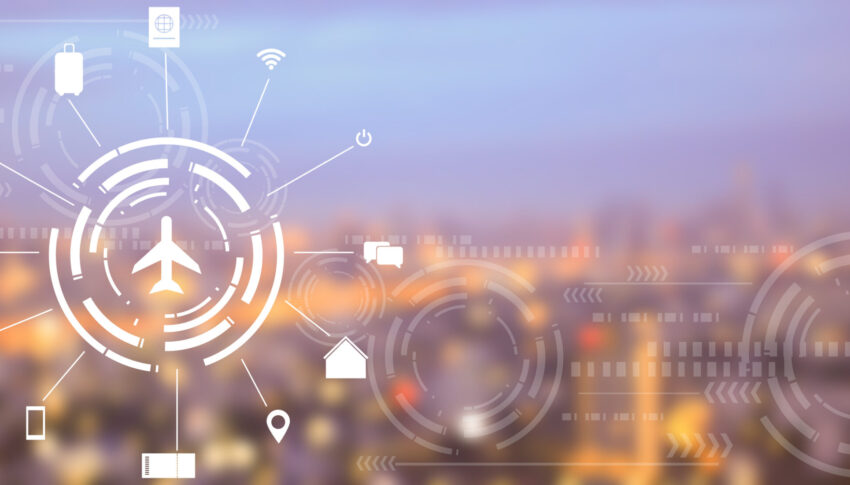The digital revolution is transforming flight operations, like so many other parts of the aviation industry. For the latest of our ab initio guides, James Sleigh, senior manager for avionics solutions, senior flight test engineer and engineering pilot at Thales, sat down with us for an overview.
“There has been an ever increasing digitisation of flight operations taking place over the past forty years, and lately it seems to be accelerating its pervasiveness,” Sleigh tells us. “Starting with the early digital avionics and some ground based systems in the 1980s, what had historically been an analog industry moved into the digital domain. Navigation signals displayed on analog cockpit moving-needle instruments gave way to electronic displays driven by digital processing.”
Autopilots now use digital processors, software and displays rather than the classic analogue automated flight control systems. Fly by wire is now the default, over conventional manual flight controls. GPS and ADS-B are the new sextants and radio position reports. Air traffic management uses digital displays, communications and systems instead of teletype and printed paper strips.
Elsewhere in the adjacent parts of the industry, organisations involved in maintenance, repair and overhaul run on computerised publications and tools rather than paper and even microfiche manuals. Fuelling, cargo operations, crew training, ground operations and the overall management of the airline are all now digital.
As a result of all this investment, the vast majority of flight operations is now digital. “The grandfathered systems that remain, both ground and airborne, often serve as failsafe backups,” Sleigh explains.
A pilot or flight operations professional today will therefore see a world very different from those in the documentaries of old.
“Long gone are the days of large charts in a flight planning room with large weather printout sheets hanging from the walls,” Sleigh says. “Flight crews and dispatchers today utilise an amazing collection of technologies that bring together data and information from a wide range of sources. On a single computer or tablet all aspects of the flight can be evaluated and managed: crew assignments and currency, aircraft readiness, airspace considerations and of course weather predictions.”
When planning the flight, automated systems help to take all these into account, creating a detailed flight plan including of course routing, but also adding in performance predictions for the aircraft, any required fuel contingencies, particular cargo or passenger needs, and much more.
And the progress of technology never stops.
“Advances are being made in the automatic integration of disparate data sources to aid the crews in ground based and airborne decision making,” Sleigh says. “For example, an advanced digital flight planner systems can automatically combine airspace traffic prediction data, weather prediction data, along with aircraft performance data to propose the best options when multiple factors are considered.”
“Often,” Sleigh highlights, “this plan data can then be digitally uploaded to the aircraft avionics system of the aircraft.
For the future, Sleigh predicts, “the growth of artificial intelligence technology will have a large impact in solutions for aiding pilots’ decisions.”
Adding the benefits of the Internet of Things as more and more aircraft are connected with better and lower priced inflight connectivity will move digital flight operations to another level, both for crewed aircraft and the coming generation of uncrewed vehicles [PDF].
Sleigh imagines a future — and in some early adopter cases a present — where “smart digital aircraft components can self-diagnose issues during flight and via digital datalinks communicate with ground based service centres.”
At that point, he says, “a decision can be made to rush a replacement component, technical instructions and a technical team to the aircraft’s destination, already in place and ready to respond upon arrival. The component is changed, electronic checks are performed, electronic maintenance logs are completed and transmitted back to the service centre which then returns the aircraft to service via digital communications to the operations team.”
With the prospects of artificial intelligence adding further information to help decisionmakers, it’s clear that the digitalisation of flight operations will only be accelerating.
Author: John Walton
Published 3rd May 2022




